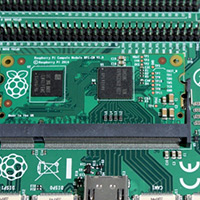

Low-E Annealed Glass A Sustainable Choice for Modern Architecture
In the realm of modern architecture and sustainable building practices, low-emissivity (Low-E) annealed glass has emerged as a pivotal material, marrying aesthetic appeal with energy efficiency. This innovative glass type is designed to minimize the amount of infrared and ultraviolet light that comes through the glass without compromising the amount of visible light transmitted. As building designs increasingly prioritize environmental sustainability, low-E annealed glass provides a compelling solution that addresses both energy consumption and interior comfort.
Understanding Low-E Glass
Low-E glass is coated with a thin layer of metallic oxides that reflect heat while allowing natural sunlight to pass through. The primary function of this coating is to reduce the amount of heat lost during the winter months and ensure that unwanted heat from the sun is kept out during the summer, leading to significant energy savings. By incorporating Low-E glass into buildings, architects can create environments that maintain consistent temperatures, reducing the reliance on heating and cooling systems.
Annealing is a critical process in the production of this type of glass, which involves heating the glass to a high temperature and then cooling it slowly. This process improves the glass’s durability and eliminates internal stresses, making it suitable for a variety of applications. The resulting product is not only more robust but also safer, as it shatters into less dangerous pieces in case of breakage.
Benefits of Low-E Annealed Glass
1. Energy Efficiency Buildings are responsible for a significant portion of global energy consumption, with windows often contributing to heat loss and gain. Low-E annealed glass drastically reduces this energy expenditure by controlling thermal transfer. This can lead to lower utility bills and reduced environmental impact.

2. Comfort Low-E glass enhances indoor comfort by providing a stable indoor temperature year-round. It minimizes temperature fluctuations and reduces drafts, enhancing the overall experience for occupants. Additionally, it can protect furnishings and flooring from sun damage, preserving their aesthetic and functional qualities.
3. Aesthetic Versatility Low-E annealed glass comes in various styles and finishes, making it an attractive choice for architects and designers. Its clarity and customizable options allow for creative freedom without sacrificing performance. From residential homes to commercial spaces, this glass can enhance the visual appeal while maintaining energy efficiency.
4. Eco-Friendly The use of Low-E glass aligns with global sustainability goals. By reducing energy consumption, buildings equipped with this technology contribute to lower carbon emissions. As society increasingly demands environmentally responsible construction methods, Low-E glass stands out as a preferred material in green building certifications such as LEED (Leadership in Energy and Environmental Design).
Applications in Architecture
Low-E annealed glass is widely used in residential and commercial applications. In high-rise buildings, it helps maintain a comfortable environment for tenants while reducing the overall carbon footprint. In residential settings, homeowners benefit from lower energy bills and enhanced comfort levels. Moreover, Low-E glass is commonly utilized in skylights and curtain walls, providing natural light without the excessive heat that can lead to uncomfortable living and working conditions.
Conclusion
As the architectural industry continues to evolve toward more sustainable practices, Low-E annealed glass exemplifies innovation that enhances both functionality and aesthetics. By integrating this advanced material into building designs, architects can contribute to a more sustainable future while providing spaces that are comfortable, efficient, and visually appealing. Whether in urban high-rises or suburban homes, Low-E glass serves as a testament to the synergy of design and sustainability, marking a significant step forward in modern construction practices. In a world increasingly concerned with climate change and energy conservation, Low-E annealed glass is not just a material choice but a commitment to a greener tomorrow.